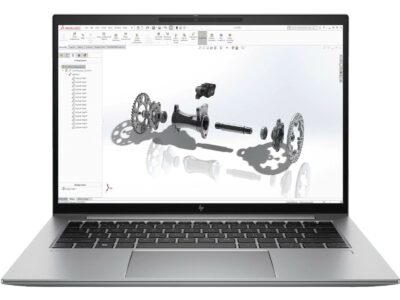In the fast-paced world of graphic design where everything is digitized, the importance of finding the right processing power cannot be overstated. A designer’s creativity may know no bounds, but without a laptop that is equipped to handle the demands of modern design software, their visions can be limited. This article is your guide to understanding why performance matters and how to find the perfect processing power for your graphic design needs.
Before we delve into the intricacies of processing power, let’s unpack the world of graphic design software. From Adobe’s Creative Suite to CorelDRAW and beyond, these applications are the lifeblood of a designer’s work. Each design project, from the simplest logo to a complex multimedia presentation, places unique demands on a laptop’s capabilities.
Now let us look into some of the key points to consider.
1. The Heart of the Machine: Multicore Processors
At the core of a laptop’s performance lies the central processing unit (CPU). For graphic design, where multitasking and handling resource-intensive applications are the norm, a multicore processor is crucial. Look for laptops powered by high-performance CPUs, like the Intel® Core™ i7 or the likes, as they provide the multitasking capabilities needed for seamless design workflows.
2. Clock Speed and Turbo Boost: Accelerating Design Tasks
Clock speed is the heartbeat of a processor, determining how fast it can execute tasks. A higher base clock speed ensures faster performance in single-threaded applications, while the ability to turbo boost kicks in when additional processing power is needed. This ensures that your laptop can handle sudden spikes in demand, maintaining a smooth and uninterrupted workflow.
3. Graphics Prowess: The Role of Dedicated GPUs
Graphic design involves more than just handling general computing tasks; it requires rendering high-quality visuals and 3D elements. Enter the dedicated graphics processing unit (GPU). Laptops featuring dedicated GPUs, such as the NVIDIA GeForce RTX series, provide the horsepower needed for rendering, enhancing graphic-intensive tasks, and delivering a fluid design experience.
4. RAM: Ensuring a Spacious Design Canvas
Random Access Memory (RAM) is the canvas where your design projects come to life. To ensure smooth performance, aim for a laptop with a minimum of 16GB of RAM. This ample memory not only prevents lag when working on large design files but also facilitates smooth multitasking, allowing you to seamlessly switch between design applications.
5. Storage Speed: Solid State Drives (SSDs) for Swift Access
In the graphic design arena, where file sizes can be substantial, storage speed is paramount. Opt for a laptop equipped with a Solid State Drive (SSD) as the primary storage device. SSDs not only enhance system responsiveness but also significantly reduce loading times for design applications and large project files.
6. External Factors: Display and Connectivity
Processing power isn’t confined to internal components; external factors also play a pivotal role. A high-resolution display is essential for clarity and precision in design work. Look for a laptop with at least Full HD (1920×1080) resolution and accurate color representation. Additionally, consider the laptop’s connectivity options, ensuring it has the ports needed to connect to external displays and peripherals.
7. Cooling Mechanisms: Sustaining High Performance
Extended design sessions can push a laptop’s components to their limits, leading to heat buildup. To ensure sustained high performance, opt for laptops with efficient cooling mechanisms. Features like heat pipes and multiple fans help dissipate heat, preventing overheating and maintaining consistent processing power.
8. Future-Proofing Your Investment
In a rapidly evolving technological landscape, future-proofing your investment is key. Choose a laptop with components that are upgradeable, allowing you to adapt to the demands of future design software updates. This forward-thinking approach ensures that your laptop remains a reliable and powerful tool throughout your design journey.
Conclusion
In conclusion, In the dynamic world of graphic design, finding the right processing power is not just about performance—it’s about empowering your creative vision. By understanding the importance of multicore processors, clock speed, dedicated GPUs, ample RAM, storage speed, and external factors like display quality and connectivity, you can make an informed choice when selecting a laptop. Within HP’s impressive lineup for graphic design laptops, a standout choice emerges—the HP ZBook Firefly G10 Mobile Workstation PC. Meticulously designed as a powerful yet feather-light mobile workstation, this laptop is tailored to meet the exacting demands of professionals. With its exceptional performance and portability, it presents itself as the optimal solution for seamlessly handling rigorous tasks while on the go.
Compare and view all the graphic design laptop under 3 lakh























